
No-weld Aluminium or Timber Batten Gates
Introduction
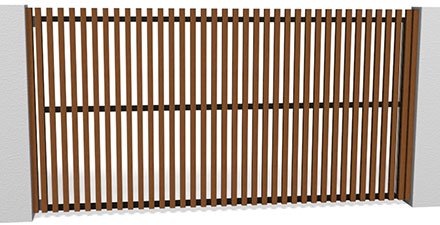
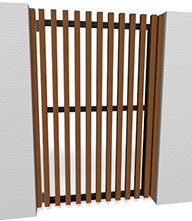
Gates with Aluminium or Timber Battens have the battens screwed to the front of a No-weld box section frame with screws coming from the back through the frame concealed with clip on covers giving a unique clean look possible only because there are no welds and no screws visible. Swing gates can go up to 4m wide x 2m high and sliding gates 6m wide x 2m high. Gates higher than 1.2m require a middle rail.
Sliding gates do require a sliding gate channel see No-weld sliding gates and No-weld Telescopic Sliding Gates to learn more.
No-weld frames and aluminium battens may have many different finishes READ MORE
What's included in a No-weld Batten Gate DIY Kit?
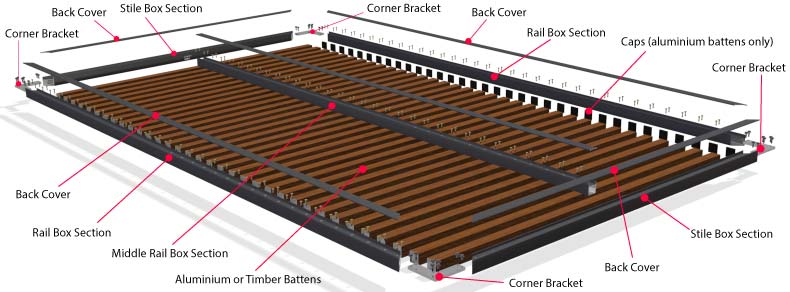
Kits come pre-cut and drilled ready to assemble. Gates with Vertical Battens only.
Getting a Quote and Ordering
Please contact us for a free quote for a DIY gate kit or if there's an installer in your area full installation.
Things to Consider
Aluminium Batten Sizes. The most popular being 40mm square, there are also 20mm, 25mm, 32mm and 50mm square as well as 50mm x 25mm, 40mm x 25mm and even 65mm x 16mm slats sitting on their edge to give a radiator effect. Hardwood battens are generally 38mm square.
Gate Width verses Gap between Battens.
No-weld Aluminium Batten Gates can have any gap between battens.
The exact gap depends on how the battens fit into the width of the gate, if you want a gate 4m wide with 40mm wide battens and a 40mm gap you will require 51 x battens and the actual gap will be 39.2mm.
Making No-weld Batten Gate Kits yourself.
If you're in the gate or fence business and want to save money as well as get jobs done faster (customers like it done fast), you can do so by making No-weld Batten Gate kits up yourself. All you need is a good mitre saw, lengths of No-weld framing, battens and hardware. If you keep No-weld materials in stock you could custom make Batten gate kits up yourself in a matter of hours onsite, assemble them and then install, so you don't need a workshop just somewhere to store the material and a suitable vehicle. This will give you a significant edge over your competition both time wise and price wise.
You can order No-weld framing and hardware at the No-weld Online Shop.
Making these gates requires mitred cuts, for technique on how to mitre cut No-weld framing accurately and cleanly with no burrs and drill holes for corner brackets see our our Guide to Cutting and Drilling No-weld Framing. There are other styles of gates too see What can be Made with No-weld.
Trade Customers
If you become one of our trade customers we can pass work onto you for free for No-weld gates, infill panels and fencing. You can either work as a fabricator only for others to install or as a fabricator and installer. See below on how No-weld Batten gates are assembled.
For more information see our No-weld for Trade and Wholesale page
Assembly Instructions for No-weld Aluminium Batten Gates
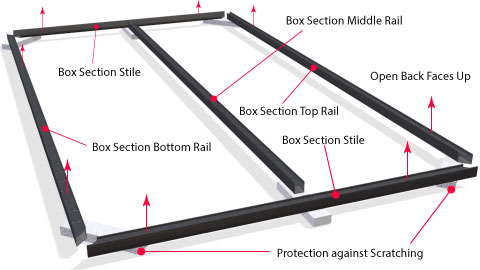
Place the pre-cut and drilled frame members on clean blocks of polystyrene foam or similar non-scratching material laid out on a flat surface with the open back faces up.
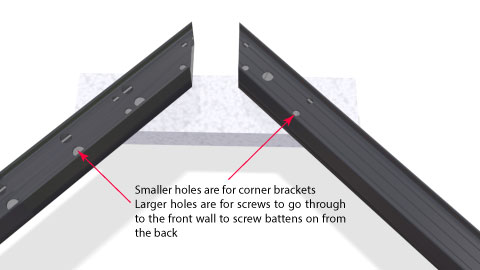
Frame members will have holes pre-drilled into their open back for the corner brackets and for screws to go through the frame to the front wall so the battens can be screwed on from the back and screws not seen.

Corner brackets are required to hold the frame together. These are fitted by sliding them into the ends of the top and bottom rails to begin with, which have grooves in both sides to help guide the bracket in.
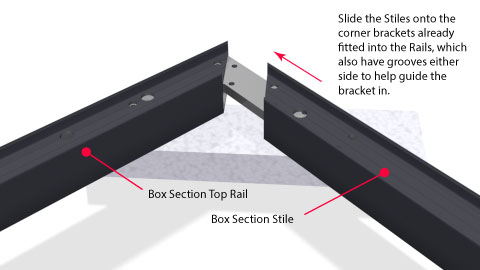
Then slide the stiles onto the corner brackets of the top rail. The stiles also have grooves either side to help guide the brackets in.

Gates higher than 1.2m require a middle rail that has small angle brackets pre-fitted to the stiles. The middle rail should be fitted at the same time as the stiles are being fitted to the top rail.
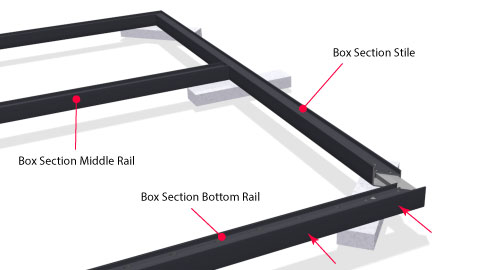
Then fit the bottom rail to the bottom of the stiles.
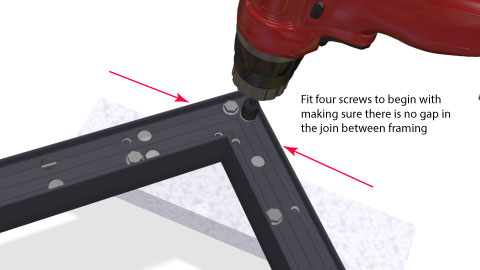
Then fit four larger tek screws into each corner bracket using a cordless drill in the pattern illustrated to hold the frame together for now.
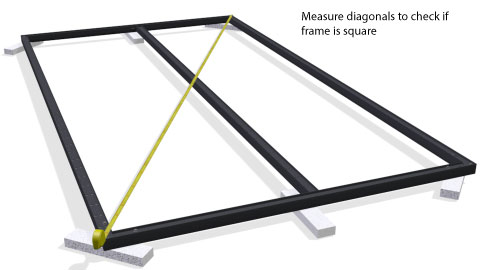
Once screwed together check the diagonals of the frame to make sure it is square, if not loosen all bracket screws, adjust the diagonals so they are the same then tighten the screws back up again. The rest of the screws can now be fitted.

Lay all the battens down with caps fitted (if aluminium) on two lengths of non-scratching material flat on the ground. Carefully measure the position of the battens to get their spacing correct.
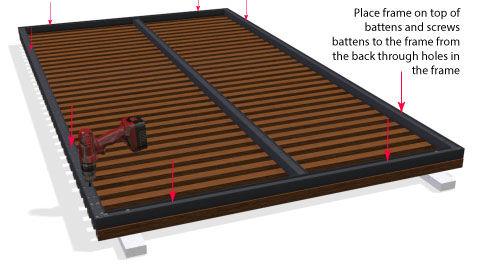
Place the frame on top of the battens making sure the battens align with it correctly then screw the battens on from the open back of the frame checking the alignment of the battens as you go. This could be done after the frame is installed.
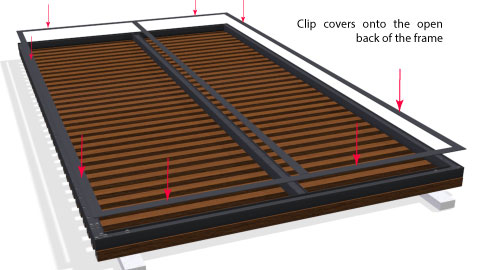
Covers are then clipped into the back of the frame to cover the screws. See Guide to Fitting No-weld Hardware for technique on how to do this.
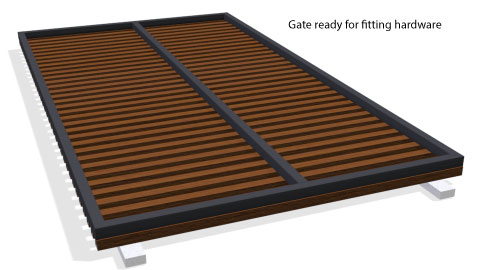
Once the covers are fitted hardware such as hinges, latch, stop or guide rail can be fitted to the back of the frame. See Guide to Fitting No-weld Hardware.